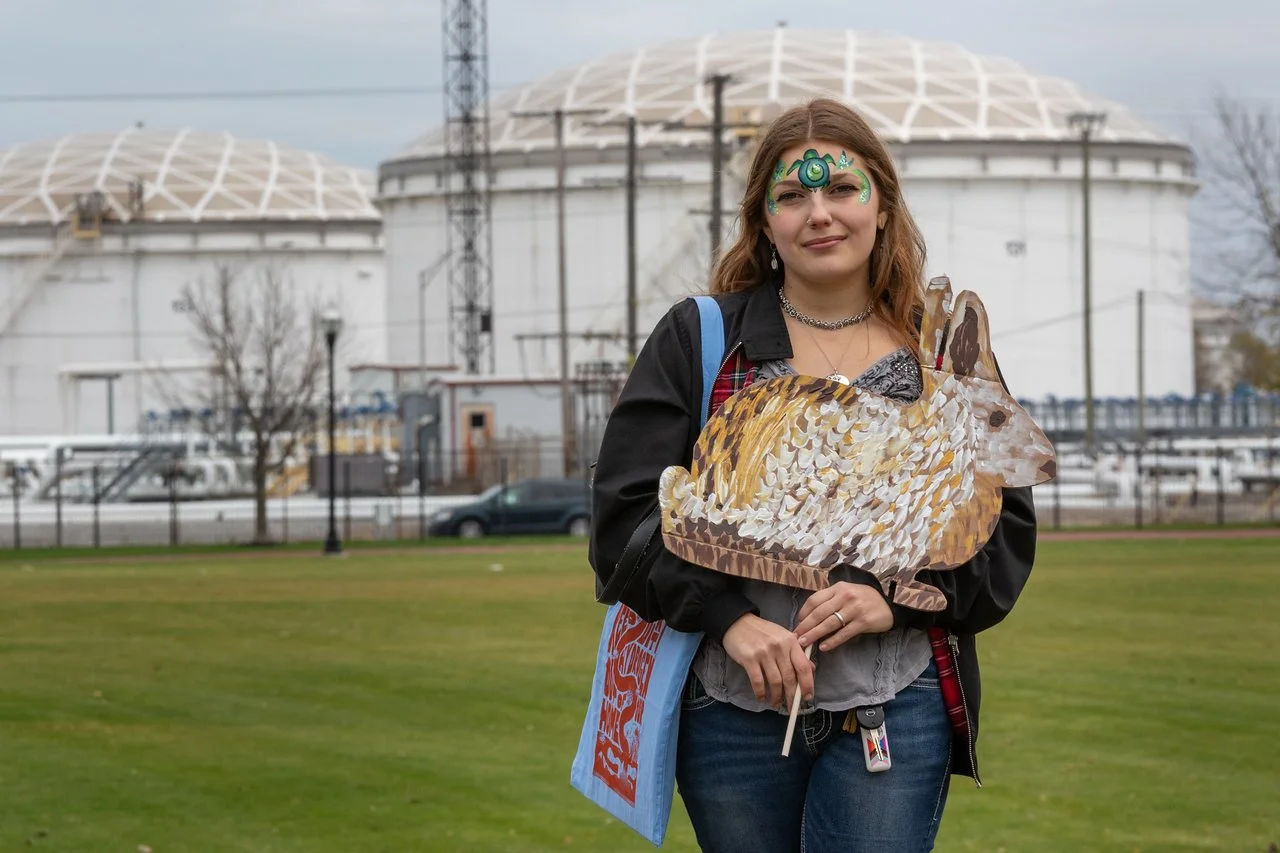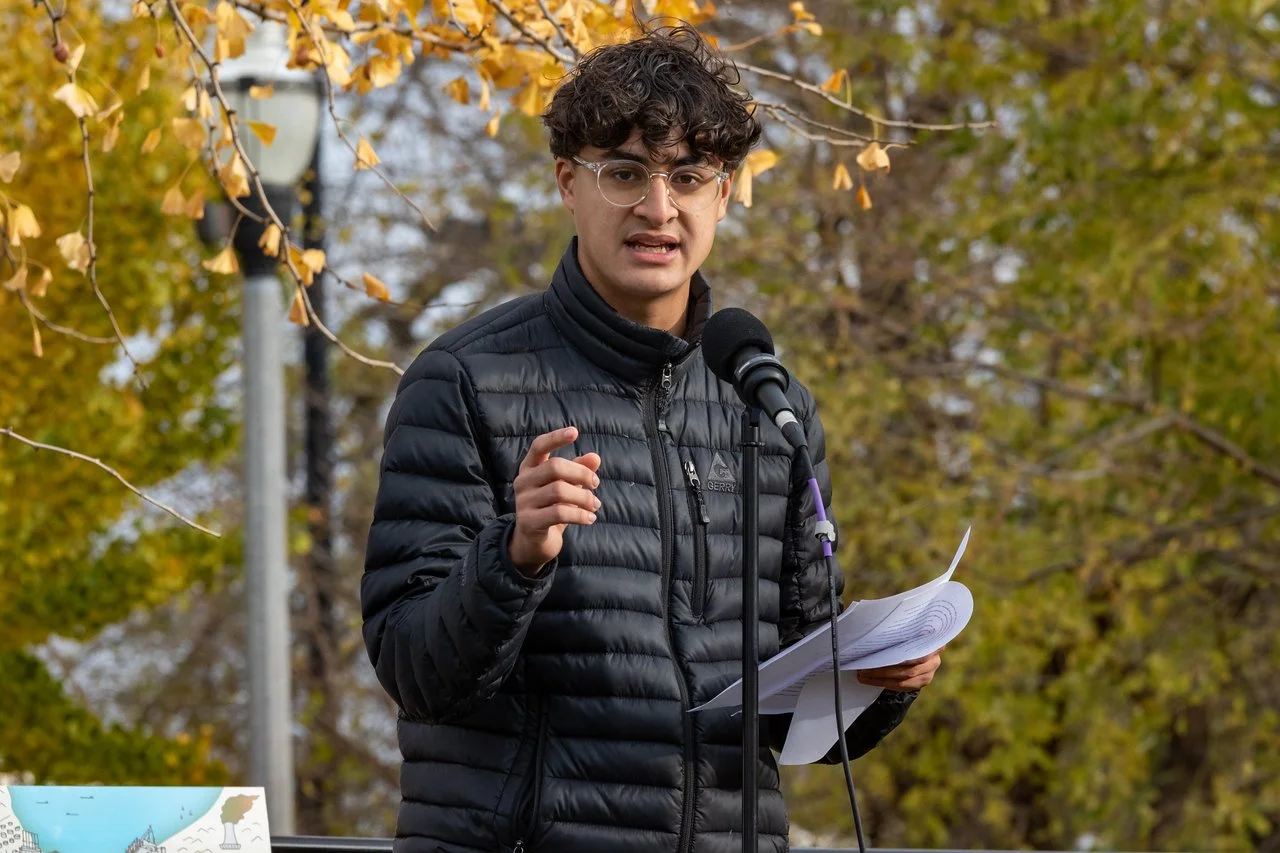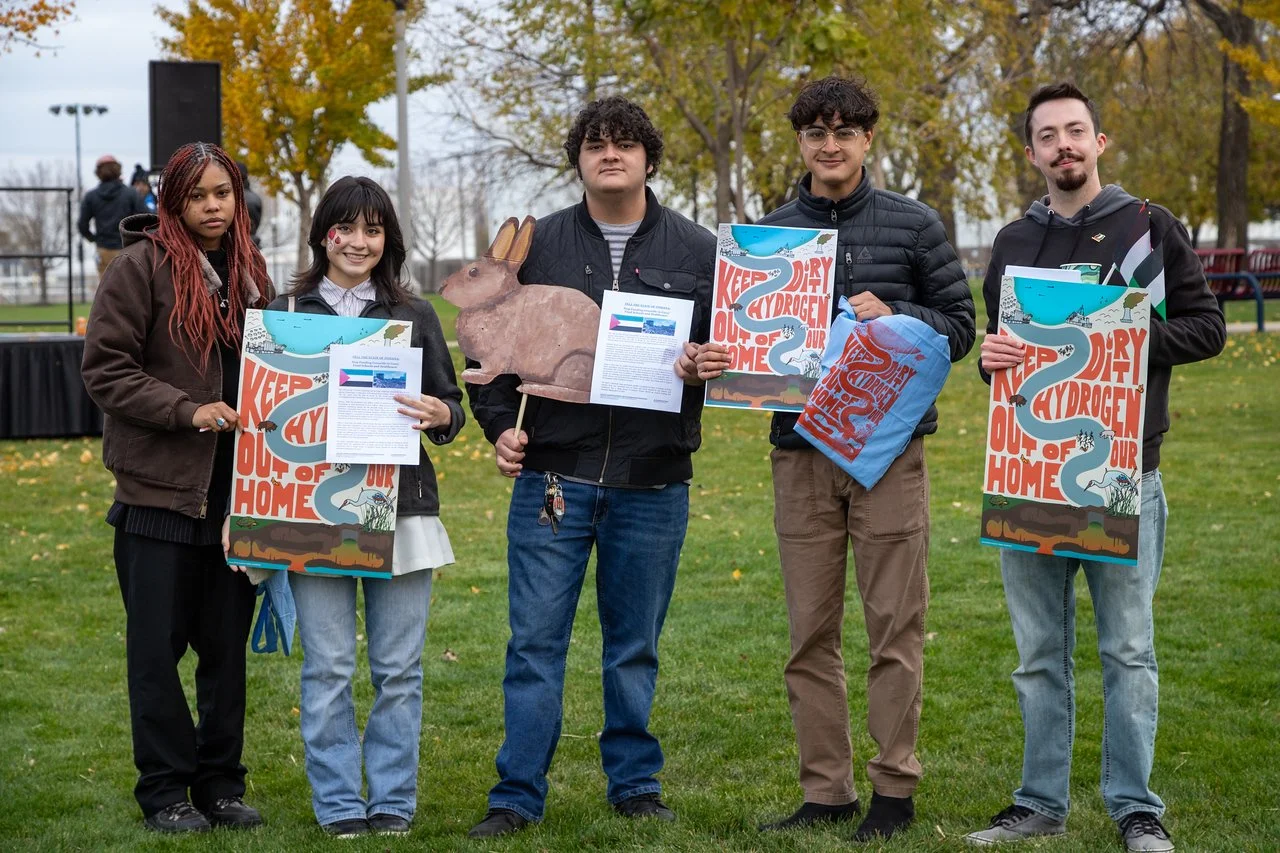
No False Solutions NWI Campaign
Video by Soft Cage Films - No Dirty Hydrogen Rally, 11/16/24, Tod Park, East Chicago, Indiana
In November 2021, the Bipartisan Infrastructure Act was enacted to invest $1 trillion in modernizing our nation’s aging infrastructure. Then, in August 2022, the Inflation Reduction Act, also called the IRA, was approved by U.S. lawmakers and included a record $369 billion in spending on climate and energy policies. More than $80 billion in federal funds are available over the next decade for industrial decarbonization.
While some federal monies will reach frontline communities to support vital clean energy and low-income initiatives, vast amounts of money and tax credits are being invested in projects that could prolong our dependence on fossil fuels and perpetuate pollution harms in already overburdened communities. These technologies include carbon capture and storage, fossil fuel-based hydrogen, and “sustainable” aviation fuel. All of these technologies have been rolled out with little to no transparency.
We call these technologies “False Solutions.” These are market-based schemes promoted by the fossil fuel industry to create the illusion of meaningful climate action while allowing polluters to keep polluting.
What are False Solutions Being Pushed in the Region?
-
Carbon capture and sequestration (CCS) captures carbon emissions at fossil-fueled power plants and industrial facilities. The carbon is then either sequestered underground or put to use.
CCS is linked to:
Surface migration resulting in asphyxiation and death and stalled vehicles
Water and soil contamination resulting in contamination of our drinking water and the leaching of other contaminants
Earthquakes due to the activation of existing or the creation of new faults and fractures of tectonic plates.
CCS goes hand in hand with the MachH2 Hub because the hub will utilize "Blue" Hydrogen, which is fossil-fuel derived with the addition of CCS, where CO2 is filtered out of emissions and stored underground in dumps or pipelines.
One needs to look no further than the 2020 CO2 pipeline explosion in Satartia, MS, to see the disasters that are possible with CCS pipelines. The emergency was so dire that the Pipeline Hazardous Materials Safety Administration at the Department of Transportation agreed to revisit the regulations, now due in 2024.
CCS projects are already underway in Indiana. In Vigo and Vermillion Counties, Wabash Valley Resources plans to build a fertilizer plant and create, transport, and dump 1.67 million tons of waste carbon dioxide (CO2) every year for 12 years, which would make this project the largest CO2 dump in U.S. history. Due to the advocacy of community members and the Citizens Action Coalition, this proposed project is getting notable pushback.
-
Hydrogen is the most abundant chemical element, contributing 75% of the universe's mass. Hydrogen is being touted as a replacement for fossil fuels and can store energy for transport for later use. Hydrogen can be made by splitting water, H2O, with a lot of electricity, and a machine called an electrolyzer. The electrolyzer can be powered by various resources, such as natural gas, steam, nuclear power, biogas, and renewable power, like wind and solar energy.
Ninety-nine percent of hydrogen is currently produced using fossil fuels. All forms of hydrogen use vast quantities of water that will impact our Great Lakes ecosystem. Hydrogen transportation poses unique safety issues: hydrogen is highly flammable, burns hotter than gas, and is more explosive and corrosive to pipelines.
Green hydrogen created from renewable energy, when perfected and implemented with true community buy-in and consent, is the only feasible hydrogen source in decarbonizing Northwest Indiana’s steel sector.
The Midwest Hydrogen Hub & Carbon Capture and Storage
In the Fall of 2023, the Department of Energy (DOE) unveiled its $7 billion plan to construct and implement hydrogen hubs across the U.S. Nearly a year later, on November 20, 2024, the DOE’s Office of Clean Energy Demonstrations (OCED) announced the phase 1 awarding of $22.2 million (up to $1 billion total in award funding for all phases) to the Midwest Alliance for Clean Hydrogen (MachH2) Hub in Indiana, Illinois, Iowa, and Michigan, utilizing gas, nuclear, and wind energy to produce hydrogen aiming to “decarbonize a variety of industries such as manufacturing, steel and glass production, power generation, refining, and heavy-duty transportation.”
A hydrogen production facility is proposed to be constructed near the BP Whiting refinery, which will serve as the center of the MachH2 hub for Indiana. The MachH2 Hub in Indiana will primarily utilize refinery gas to create “Blue Hydrogen" while using carbon capture and storage technology.
In tandem with the hub, BP is also receiving $138 million from DOE’s Office of Fossil Energy and Carbon Management (FECM) and the State of Indiana to implement this carbon capture and storage project, proposing to inject, store, and pipe up to 23 million metric tons of CO2 per year from the production of blue hydrogen, charging residents millions in federal tax dollars and threatening communities across six Indiana counties. The BP carbon dioxide (CO2) pipeline is proposed to begin in Lake County and run hundreds of miles through Newton, Jasper, White, Benton, and Pulaski Counties, where the CO2 will be stored (as seen in this graphic).

These False Solutions will only perpetuate environmental injustice in a region that has historically suffered the disproportionate burdens of polluting industry. NWI needs real climate solutions like community renewable power and energy efficiency.
Northwest Indiana Spotlight
Northwest Indiana is the country’s steel-making capital and a historic Rust Belt region. For more than a century, the steel industry — U.S. Steel and now Cleveland-Cliffs — has been the region's economic backbone, employing 28,000+ workers.
Four of the country's 11 steel mills are clustered in the region. The Environmental Protection Agency (EPA) estimates that people living near mills are exposed to 80 tons of toxic metal emissions annually, perpetuating environmental justice impacts, as reported by the Sierra Club. Ninety percent of nationwide steel emissions derive from Northwest Indiana. This pollution is worsened due to the cumulative effects of industry along Lake Michigan, including BP Whiting and the country’s largest steel mill, U.S. Steel Gary Works.
According to the International Energy Association, emissions from the steel industry must fall by at least 50 percent by 2050 to meet global energy and climate goals. Some of the steel industry’s largest consumers — General Motors, Honda, Toyota, Stellantis, and Subaru — all of which have plants in Indiana — have pledged to achieve carbon neutrality in their supply chains between 2038 and 2050, varying by manufacturer, as reported by the American Council for an Energy-Efficient Economy for Citizens Action Coalition.
Under the guise of carbon reduction, the region is being targeted to host false solutions, like the BP CO2 pipeline, to address these climate goals. Northwest Indiana needs true solutions, like energy efficiency and renewable energy, to reverse greenhouse gas emissions while safeguarding public health and creating family-sustaining, sustainable union jobs.
Read the Hydrogen Report Co-Authored with JTNWI
Just Transition Northwest Indiana and nine other frontline organizations across the U.S. collaborated with the Just Solutions Collective to publish an environmental justice framework on hydrogen energy for a three-part report.














































